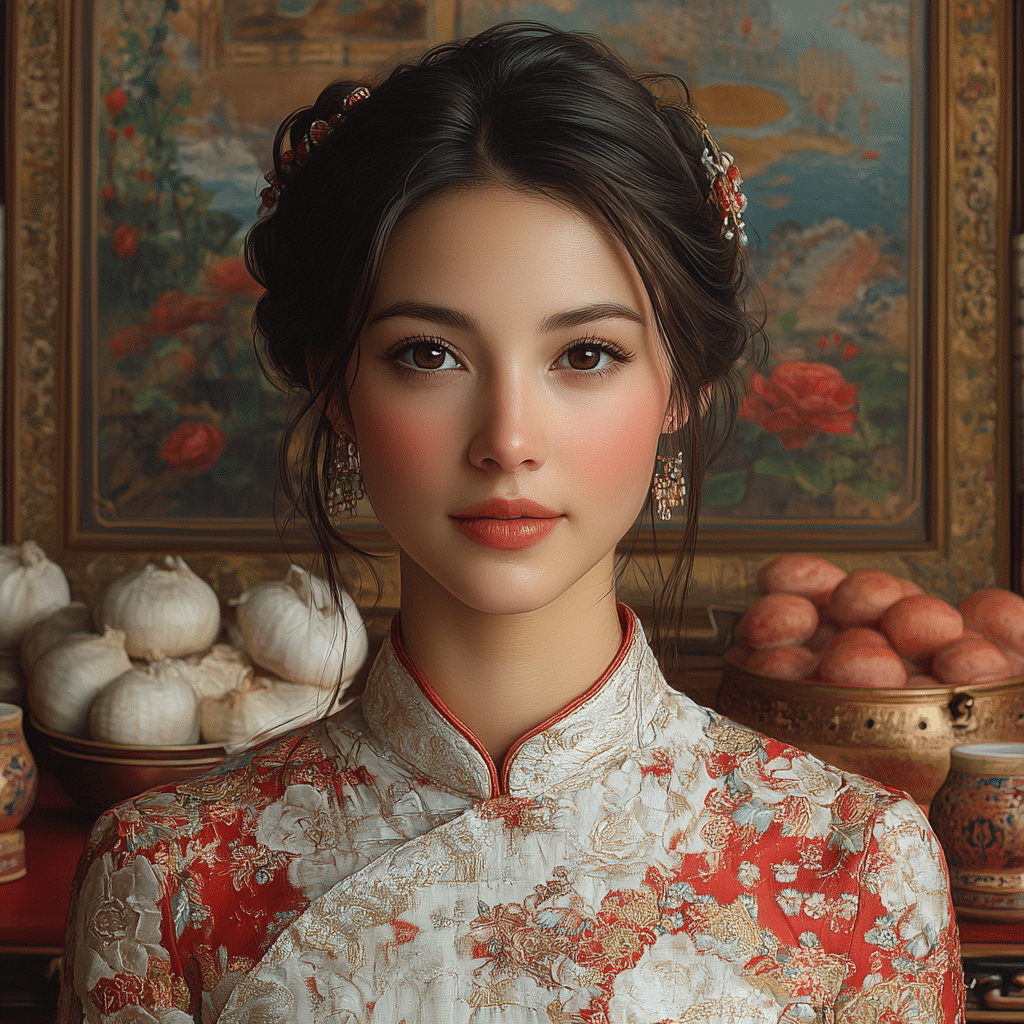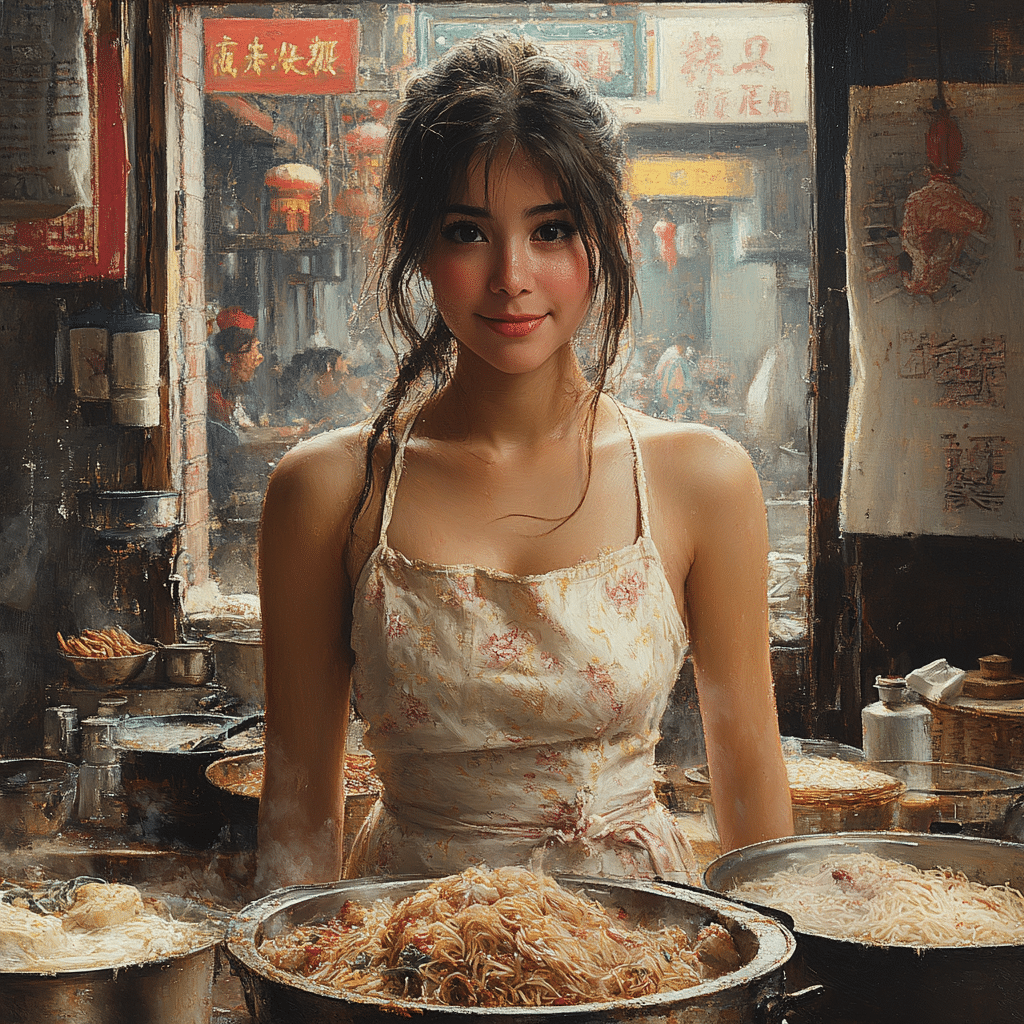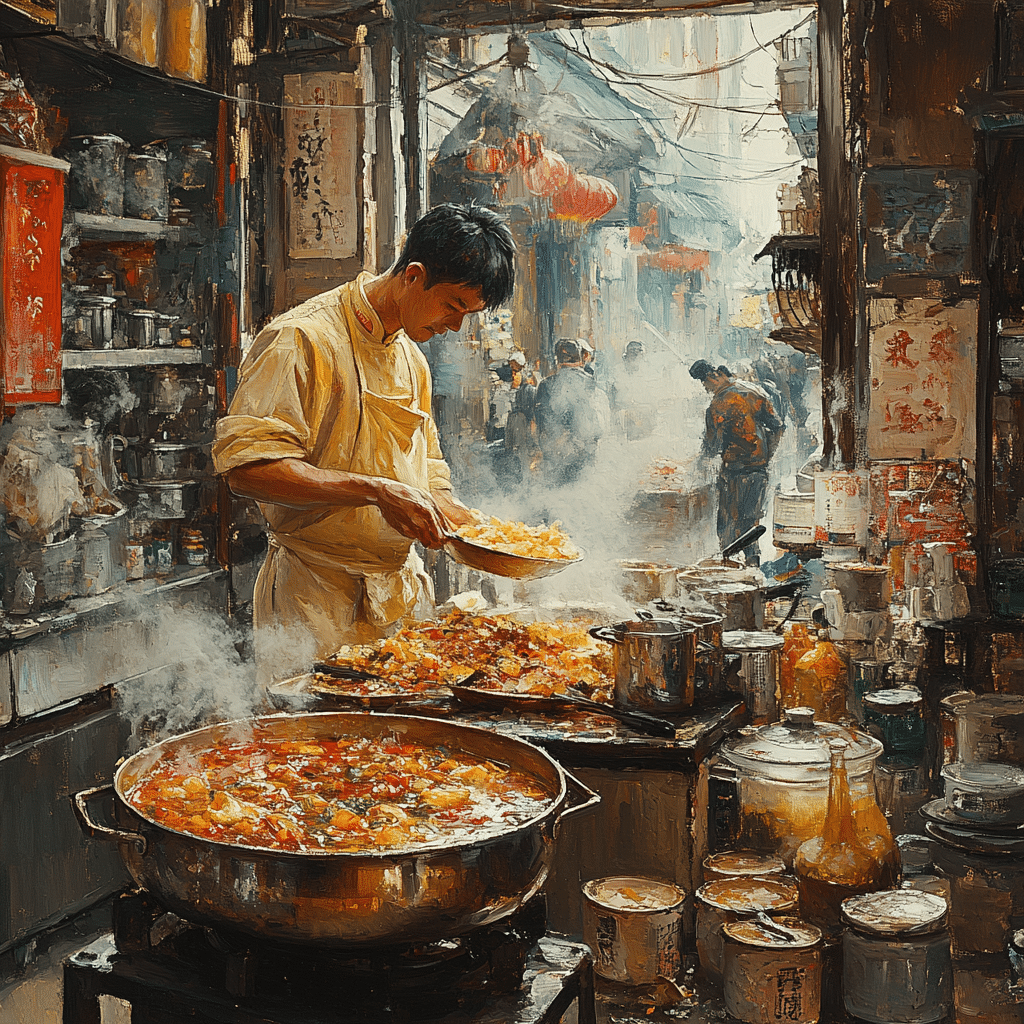Transforming the Culinary Landscape with Ching-He Huang
Ching-He Huang, affectionately known as the “China Cook,” has flipped the culinary world on its head with her innovative approach to Chinese cuisine. No longer confined to takeout menus and Chinatown enclaves, Chinese food has been thrust into the global spotlight, thanks largely to Ching’s pioneering efforts. Her unique melding of traditional Chinese cooking with modern techniques has not only popularized the cuisine but also paved the way for new culinary adventures.
Ching-He Huang MBE, an International Emmy-nominated, award-winning TV chef and cookery author, has redefined Chinese cooking by transforming age-old techniques to fit contemporary lifestyles. Her recipes are more than just food—they are an ode to cultural authenticity wrapped in the convenience of modernity. This transformation has gone beyond the rudimentary to influence menu planning and cooking methods in homes and restaurants worldwide. By demystifying the intricate aspects of traditional Chinese cooking, Ching has inspired a legion of chefs and home cooks.
China Cook’s Adaptation to Modern Palates
Ching’s genius lies in her ability to adapt timeless Chinese culinary techniques to suit modern-day tastes and lifestyles. She steers away from elaborate, time-consuming recipes without compromising flavor or integrity. By replacing deep-frying with air-frying or stir-frying, she caters to health-conscious eaters while maintaining authentic taste.
Her minimalist ingredient lists make her recipes accessible; no need to hunt down obscure ingredients. For instance, substituting oil-heavy stir-fries with water-based techniques makes Chinese food lighter, healthier, and suitable for everyday cooking. Ching’s recipe for a simple yet delicious stir-fried broccoli not only satisfies taste buds but also aligns with global trends toward plant-based diets. Her cookbook “Asian Green” champions this philosophy, making the transition to healthier diets easier for a wider audience.

| Topic | Description |
| Key Styles of Chinese Cuisine | – Cantonese Cuisine: Known for its mild, fresh flavors and emphasis on seafood. – Shandong Cuisine: Famous for its diverse cooking methods, especially braising and frying. – Jiangsu Cuisine (Huaiyang Cuisine): Noted for its delicate presentation and innovative use of ingredients. – Sichuan Cuisine: Renowned for its bold, spicy flavors and liberal use of garlic and chili peppers. |
| Prominent Figure | – Ching-He Huang MBE: International Emmy-nominated, award-winning TV chef, and cookery author. – Received MBE in the Queen’s Birthday Honours 2020 for services to The Culinary Arts. |
| Cultural Practices | – Daily Shopping for Fresh Foods: Prioritizes the freshest meats, in-season produce, and live seafood. – Emphasis on Flavor, Color, Aroma, Texture: These are the core elements of Chinese cooking. |
| Cooking Techniques | Common techniques include stir-frying, steaming, boiling, braising, and deep-frying. |
| Popular Dishes | – Cantonese: Dim Sum, Char Siu. – Shandong: Peking Duck, Sweet and Sour Carp. – Jiangsu: Lion’s Head Meatballs, Sweet and Sour Mandarin Fish. – Sichuan: Mapo Tofu, Kung Pao Chicken. |
| Ingredients | Common ingredients include soy sauce, rice vinegar, ginger, garlic, Sichuan peppercorns, and various fresh vegetables and meats. |
| Benefits of Chinese Cooking | – Rich variety of flavors and health benefits. – Encourages the use of fresh and seasonal ingredients. – Versatile and adaptable to different dietary needs and preferences. |
| Notable Contributions to Western Cuisine | Chinese cooking techniques and ingredients have influenced global cuisines, bringing more diversity and flavor to dining experiences around the world. |
Bridging Cultures: Ching-He Huang’s Global Influence
Ching-He Huang’s appeal extends far beyond her TV screen and cookbooks. Programs like “Chinese Food Made Easy” and “Exploring China: A Culinary Adventure” have become cultural bridges, introducing Western audiences to the intricacies of Chinese cuisine. By demystifying regional specialties such as Sichuan’s spicy dishes or Jiangsu’s sweet flavors, Ching fosters appreciation and cultural exchange through food.
Collaborations with culinary luminaries like Ken Hom have elevated her status to that of a global ambassador of Chinese cooking. These partnerships do more than just promote Chinese cuisine; they inspire dialogue and understanding between cultures. Ching effortlessly brings the diverse traditions of Cantonese, Shandong, Huaiyang, and Sichuan cuisine into everyday kitchens, building bridges that extend beyond the plate.
Inspiring the Next Generation of Cooks
But Ching-He Huang’s influence doesn’t end with her recipes and TV shows. She has taken a hands-on approach to nurturing the future generation of chefs through educational programs and workshops. Her cooking classes, which often emphasize the importance of fresh ingredients and sustainable practices, have cultivated a fresh wave of culinary talent.
Some of her protégés have gone on to win culinary competitions or open successful restaurants, inspired by her teachings. Her focus on seasonal ingredients and simplicity has influenced a new cadre of chefs committed to maintaining the integrity of Chinese cooking while embracing innovation. As cooking continues to honour aspects of traditional culture, Ching also explores fresh methods and ideas, making her style inspiring and dynamic.

Key Projects and Endeavors Elevating Chinese Cuisine
Eco-friendly Ventures
One of Ching-He Huang’s most notable contributions to the culinary world is her advocacy for sustainable cooking practices. In collaboration with brands like GreenPan, she has launched eco-friendly kitchenware designed to minimize environmental impact. This initiative underscores her commitment to sustainability, blending an eco-friendly ethos with her passion for delicious food.
Health-Centric Recipes
Ching’s cookbook “Asian Green” reflects her dedication to health and wellness. Focusing on plant-based recipes rich in vegetables and grains, the book emphasizes a diet that is both nutritious and innovative. This aligns seamlessly with the increasing global shift towards vegetarianism and veganism, making her a leading voice in the movement.
Television Shows and Media Presence
Ching-He Huang’s television career is a testament to her ability to engage audiences on pressing issues like food waste reduction, ethical sourcing, and fusion cuisines. Her approachable style and thoughtful commentary make significant topics accessible, sparking dialogue and encouraging viewers to think deeply about what they eat. Notable episodes, like those tackling contemporary issues, have become essential viewing for any food enthusiast.
Collaboration with Food Brands and Global Outreach
Ching-He Huang has cemented her influence through partnerships with international brands like Lee Kum Kee and Tilda Rice. These collaborations make authentic Chinese ingredients more accessible, encouraging home cooks to delve into Chinese cuisine. By putting pantry basics within easy reach, Ching has made it simple for anyone to whip up dishes that are both delicious and true to their roots.
Campaigns and product lines resulting from these collaborations have bolstered global interest in authentic Chinese cooking. Supermarkets now frequently stock Chinese essentials, partly due to the heightened demand driven by Ching’s influence. This accessibility bridges the gap between creating authentic Chinese dishes and sourcing the necessary ingredients.
Innovative Wrap-Up: The Future of Chinese Cuisine with Ching-He Huang
As we look to the future, Ching-He Huang stands at the forefront of an exciting culinary landscape. Her potential projects, like digital platforms or interactive cooking experiences, promise to further the reach of Chinese cuisine. These ventures will enable a new generation of cooks to easily access her wealth of culinary knowledge, ensuring the tradition continues to thrive.
Possibilities include augmented reality cooking classes and virtual culinary tours that explore China’s rich gastronomic regions. Ching believes in pushing boundaries while preserving authenticity. Her ongoing innovation ensures that Chinese cuisine remains vibrant, relevant, and accessible, laying the groundwork for future culinary explorations.
By examining Ching-He Huang’s extraordinary journey, we see a dynamic force transforming Chinese cuisine into a global phenomenon. Her impactful changes, educational efforts, and innovative collaborations redefine the culinary arts, making them both timeless and modern. Ching-He Huang isn’t just a cook—she’s an inspiration, championing the evolution of Chinese cuisine one delicious bite at a time.
Curious to read more about shifts in culinary culture? Check out our piece on Charlton Kings. Hungry for more? Dive into our article on China Sails. Looking for unique culinary experiences? Discover the fusion delight of Chi Cha.
China Cook: Discover Ching-He Huang’s Influence
Culinary Influence
Ching-He Huang has single-handedly elevated the humble world of Chinese cooking in mainstream media. With her cheerful demeanor and accessible recipes, she’s inspired countless home cooks to try their hands at authentic China cook dishes. Her work isn’t just about flavors; it’s about bringing tradition into modern kitchens with ease.
While everyone loves trying new recipes, Ching-He Huang’s methods are as engaging as they are enlightening. She’s taken traditional ingredients and made them less intimidating for the average cook, somewhat like how understanding the https://www.mortgagerater.com/mortgage-average-interest-rate/ average mortgage interest rate could demystify home buying for many.
Beyond the Recipe
Huang’s influence reaches far beyond just the culinary scene. Her charismatic personality and expertise have made her a familiar face on TV screens worldwide. This might seem trivial but consider this: many fans of Ching-He Huang also find joy in seemingly unrelated realms, such as watching entertaining content at https://www.baltimoreexaminer.com/gay-strip-clubs/ gay strip clubs or getting lost in the enchanting tales of https://www.baltimoreexaminer.com/viola-swamp/ Viola Swamp.
Fun fact: Ching-He Huang not only offers cooking tips but also provides life advice, often speaking at public events. It’s as if she’s offering https://www.mortgagerater.com/free-government-money-for-seniors-over-50/ government money secrets for those who seek timeless wisdom.
Financial Trivia
Steeped in Chinese tradition, Huang’s recipes can be an economical route to delicious meals, much like understanding https://www.mortgagerater.com/capital-gains-tax-rates-2024/ capital gains tax rates for 2024 can be financially savvy. In essence, while she teaches us how to cook, she also offers insights that save us dollars and cents.
So, next time you whip up a stir-fry or dumplings inspired by Ching-He Huang, remember the wealth of trivia and interesting facts behind her influence. From dining and entertaining to personal finance, she’s a beacon of practical wisdom in our kitchens and beyond.

What is special about Chinese cooking?
Chinese cooking is special for its emphasis on balancing flavors, colors, aroma, and texture. Fresh ingredients are a must, with daily shopping trips for the best meats, produce, and live seafood. Meal prep focuses on harmonizing these elements for a delicious and memorable dish.
What are the regional cooking of China?
The regional cooking styles in China are quite diverse, with the most influential being Cantonese cuisine, Shandong cuisine, Jiangsu cuisine, particularly Huaiyang cuisine, and Sichuan cuisine. Each style has its own unique techniques and flavor profiles.
How are Chinese dishes cooked?
Chinese dishes are typically cooked using a variety of methods like stir-frying, steaming, boiling, and deep-frying. These techniques help lock in flavors and maintain the nutritional value of the ingredients.
What is the most well known Chinese cooking method?
Stir-frying is probably the best-known Chinese cooking method. It involves cooking ingredients quickly at high heat in a wok, maintaining their freshness and vibrant flavors.
Why do Chinese eat so many eggs?
Eggs are a staple in Chinese diets because they’re versatile and nutritious. They’re used in many dishes like fried rice, egg tarts, and soups, offering a cheap and easy source of protein.
What is the secret of Chinese cooking?
The secret of Chinese cooking lies in its balance and freshness. Cooks aim to create a harmony of flavors, colors, and textures, using the freshest ingredients and a range of cooking techniques.
What are the 4 types of Chinese cooking?
The four main types of Chinese cooking are Cantonese, Shandong, Jiangsu, and Sichuan. Each style offers something unique, from Cantonese dim sum to spicy Sichuan dishes.
What are the 3 main foods in China?
Rice, noodles, and vegetables are the three main foods in China. These staples are used in countless dishes and are essential to Chinese meals.
What are the 5 major Chinese cuisines?
The five major Chinese cuisines include Cantonese, Shandong, Huaiyang (a part of Jiangsu cuisine), Sichuan, and Fujian. Each brings its own flavors and cooking styles to the table.
Why does Chinese food taste different?
Chinese food tastes different because of its use of unique ingredients like soy sauce, oyster sauce, and various spices and herbs. The emphasis on fresh ingredients and diverse cooking techniques also contributes to its distinctive flavor.
How are eggs cooked in China?
Eggs in China are cooked in many ways, such as steaming, frying, boiling, and sometimes fermenting. They’re used in a variety of dishes, including simple scrambled eggs and more complex recipes like century eggs.
How do Chinese cook so fast?
Chinese cooking is often quick because of the preparation techniques and equipment used, especially the wok. Ingredients are usually sliced thinly for fast, high-heat cooking, preserving their flavor and texture.
What is the most eaten dish in China?
One of the most eaten dishes in China is fried rice. It’s a versatile dish that includes rice, vegetables, eggs, and often some meat or seafood, all stir-fried together.
What are the 7 types of Chinese food?
The seven types of Chinese food include Cantonese, Sichuan, Hunan, Anhui, Shandong, Fujian, and Jiangsu cuisines. Each type has its own distinctive flavors and cooking methods.
What is the best Chinese dish to get?
Kung Pao Chicken is often recommended as one of the best Chinese dishes to get. It’s a popular dish featuring chicken, peanuts, vegetables, and chili peppers in a savory and slightly spicy sauce.
What is the speciality of Chinese cuisine?
Chinese cuisine is special for its use of harmonious ingredients and techniques. It’s all about achieving the perfect balance of flavors and textures, making each meal a unique experience.
What is special in Chinese food?
Chinese food stands out for its freshness and variety of flavors. The use of various cooking methods ensures that dishes are both delicious and nutritious.
Why is Chinese food unique?
Chinese food is unique because of its complex flavors and wide range of ingredients. The focus on balance and freshness sets it apart from other cuisines.
What makes china dishes special?
What makes Chinese dishes special is the attention to harmony in flavor, color, and texture. The cooking techniques preserve the nutritional value of fresh ingredients, making each dish both tasty and healthy.



